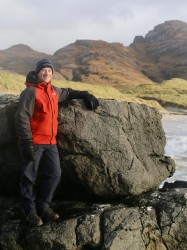BibTex format
@article{Nathwani:2021:10.1007/s00410-020-01766-1,
author = {Nathwani, CL and Simmons, AT and Large, SJE and Wilkinson, JJ and Buret, Y and Ihlenfeld, C},
doi = {10.1007/s00410-020-01766-1},
journal = {Contributions to Mineralogy and Petrology},
title = {From long-lived batholith construction to giant porphyry copper deposit formation: petrological and zircon chemical evolution of the Quellaveco District, Southern Peru},
url = {http://dx.doi.org/10.1007/s00410-020-01766-1},
volume = {176},
year = {2021}
}

